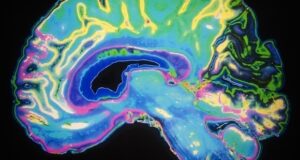
Cardiovascular diseases remain a global health crisis, spurring an urgent demand for innovative diagnostic tools that enable early detection and effective treatment. Wearable heart sound devices represent a groundbreaking shift in cardiac care, offering continuous, non-invasive monitoring with the potential to revolutionize the prevention, diagnosis, and treatment of cardiovascular conditions. These cutting-edge advancements promise to enhance patient care and outcomes by providing real-time insights into heart health.
Cardiovascular diseases impose an alarming burden on global health, emphasizing the critical need for early intervention. Traditional tools, such as stethoscopes, have long been valuable for diagnosing cardiac issues but fall short when it comes to continuous monitoring. Wearable technology emerges as a transformative solution, enabling persistent and real-time tracking of heart sounds. However, challenges such as sensitivity, comfort, and data accuracy still hinder widespread adoption. These hurdles underscore the necessity of advancing wearable devices to overcome existing limitations and improve cardiovascular health monitoring on a global scale.
On June 12, 2024, researchers from the City University of Hong Kong unveiled their work in wearable technology in SmartMat. Their study (DOI: 10.1002/smm2.1311) provides a comprehensive overview of the latest advancements in wearable heart sound sensors, examining sensor types, material innovations, design principles, denoising techniques, and clinical applications. This landmark research demonstrates how technological innovations can bridge gaps in cardiac health monitoring.
The review highlights a transformative journey from traditional stethoscopes to state-of-the-art wearable sensors that enable continuous cardiac activity monitoring. Key innovations include the development of mechanoacoustic sensors with soft, flexible designs that prioritize user comfort while maintaining high sensitivity and specificity. The research emphasizes the importance of advanced materials and optimized design principles in addressing these challenges. Denoising techniques are also spotlighted as crucial for accurate heart sound analysis, tackling the low-frequency nature of cardiac sounds and their vulnerability to environmental interference. Additionally, the study delves into the clinical applications of these sensors, envisioning a future where personalized healthcare and remote monitoring are seamlessly integrated into cardiovascular disease management. The findings pave the way for actionable, real-time insights that could significantly enhance patient outcomes and healthcare efficiency.
Our work on wearable heart sound devices marks a significant step forward in the early detection and monitoring of cardiovascular diseases. These devices have the potential to provide more accurate, real-time cardiac health data, revolutionizing the way we manage and understand heart health.”
Dr. Bee Luan Khoo, Associate Professor at the City University of Hong Kong and leading researcher in the field
The potential applications of this research are transformative. Wearable heart sound devices could redefine remote patient monitoring and enable timely interventions, offering healthcare professionals a wealth of continuous cardiac data to inform precise diagnoses and personalized treatment plans. Moreover, these advancements empower patients to take proactive control of their heart health, fostering a more engaged approach to disease management and reducing mortality rates associated with cardiovascular conditions. The promise of wearable technology in cardiac care signifies a hopeful leap toward a healthier, more informed future.
Source:
Journal reference:
Ahmad, R. u S., et al. (2024). Advancements in wearable heart sounds devices for the monitoring of cardiovascular diseases. SmartMat. doi.org/10.1002/smm2.1311.




